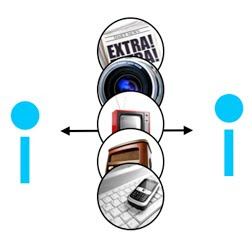Any time I teach a half-day session on Editing and Proofreading Your Work at the University of Nevada, Las Vegas, I have to balance importance against retention. In other words, I have to decide what students need to know and what they are likely to remember. English is hard for people to learn.
Well, that isn't exactly true. English is relatively easy to learn when compared to some other languages, depending on your native tongue. But English is also very hard to master because there are exceptions to everything. So, teachers learn to pick and choose.
Learn three rules to cover 85 percent of comma usage.
1. Commas link two independent clauses.
2. Commas denote introductory words or phrases and prepositional phrases.
3. Commas separate interruptions.
If you can master these three rules, then comma usage is manageable. It's just enough to move beyond simple sentences without drifting too far into more complex arrangements and all those exceptions.
Link independent clauses. Basically, independent clauses are the part of any sentence that can stand by itself. They contain a subject and predicate. There are many times in the English language when there is a good reason to link two independent clauses because it strengthens the relationship of what is being said and adds more insight and clarity. Given that examples sometimes make the best teachers:
• We washed the child, and then we cleaned up the mess she had made.
• We washed the child and then cleaned up the mess.
The first sentence has two independent clauses. The second does not. But you might notice that the first sentence reveals much more than the second. Specifically, we know that the child made a mess and made a mess of herself in the process. The second sentence leaves all of this up to interpretation.
Add clarity, emphasis, or meaning. While it's an oversimplification to call introductory words and phrases, prepositions, and clauses interruptions, it does help most writers with retention. Basically, anything additional to the sentence qualifies.
• Clearly, the English language has many exceptions.
• For more information, call our customer hotline.
While we could debate the need for "clearly" to be included in the first sentence, doing so can add an emphasis to the idea that the rest of the sentence is understood. (It can also be used to qualify a sentence as I did with the introductory word "basically.")
In sentence 2, I always use this example because so many public relations professionals forget to include a comma after the prepositional phrase "for more information." Prepositional phrases are generally used to complement a noun (or subject) and provide more information. In English, anything that comes after a preposition is part of the preposition. So when we need to identify that the preposition has ended, the best way to do it is with a comma. The exception is that you do not need a comma to separate a string of prepositional phrases because they may be included within the first one.
Separate interruptions. There are many reasons to add interruptions into text. Most of the time they either add clarity or sometimes provide some breathing room for author interjection. To do it effectively, commas help denote the original meaning of the sentence whereas the interruption introduces something new to the sentence.
• We stayed in Vancouver, not Seattle, for our vacation.
This sentence includes an interruption to add clarity. Why would they need to? Imagine someone visited both Vancouver and Seattle on a trip. If the person is a U.S. citizen, there might be an assumption that they stayed in Seattle. The interruption negates the assumption with minimal means.
In class, I provide several more examples to help it stick. But for the purposes of this educational interruption, these examples suffice. It also provides a sampling of just how much can be packed into a 3-hour class. Commas take up 11 slides from an 82-slide deck just to cover 85 percent of the usage. My next editing and proofreading class at UNLV is slated for September.
Well, that isn't exactly true. English is relatively easy to learn when compared to some other languages, depending on your native tongue. But English is also very hard to master because there are exceptions to everything. So, teachers learn to pick and choose.
Learn three rules to cover 85 percent of comma usage.
1. Commas link two independent clauses.
2. Commas denote introductory words or phrases and prepositional phrases.
3. Commas separate interruptions.
If you can master these three rules, then comma usage is manageable. It's just enough to move beyond simple sentences without drifting too far into more complex arrangements and all those exceptions.
Link independent clauses. Basically, independent clauses are the part of any sentence that can stand by itself. They contain a subject and predicate. There are many times in the English language when there is a good reason to link two independent clauses because it strengthens the relationship of what is being said and adds more insight and clarity. Given that examples sometimes make the best teachers:
• We washed the child, and then we cleaned up the mess she had made.
• We washed the child and then cleaned up the mess.
The first sentence has two independent clauses. The second does not. But you might notice that the first sentence reveals much more than the second. Specifically, we know that the child made a mess and made a mess of herself in the process. The second sentence leaves all of this up to interpretation.
Add clarity, emphasis, or meaning. While it's an oversimplification to call introductory words and phrases, prepositions, and clauses interruptions, it does help most writers with retention. Basically, anything additional to the sentence qualifies.
• Clearly, the English language has many exceptions.
• For more information, call our customer hotline.
While we could debate the need for "clearly" to be included in the first sentence, doing so can add an emphasis to the idea that the rest of the sentence is understood. (It can also be used to qualify a sentence as I did with the introductory word "basically.")
In sentence 2, I always use this example because so many public relations professionals forget to include a comma after the prepositional phrase "for more information." Prepositional phrases are generally used to complement a noun (or subject) and provide more information. In English, anything that comes after a preposition is part of the preposition. So when we need to identify that the preposition has ended, the best way to do it is with a comma. The exception is that you do not need a comma to separate a string of prepositional phrases because they may be included within the first one.
Separate interruptions. There are many reasons to add interruptions into text. Most of the time they either add clarity or sometimes provide some breathing room for author interjection. To do it effectively, commas help denote the original meaning of the sentence whereas the interruption introduces something new to the sentence.
• We stayed in Vancouver, not Seattle, for our vacation.
This sentence includes an interruption to add clarity. Why would they need to? Imagine someone visited both Vancouver and Seattle on a trip. If the person is a U.S. citizen, there might be an assumption that they stayed in Seattle. The interruption negates the assumption with minimal means.
In class, I provide several more examples to help it stick. But for the purposes of this educational interruption, these examples suffice. It also provides a sampling of just how much can be packed into a 3-hour class. Commas take up 11 slides from an 82-slide deck just to cover 85 percent of the usage. My next editing and proofreading class at UNLV is slated for September.





































